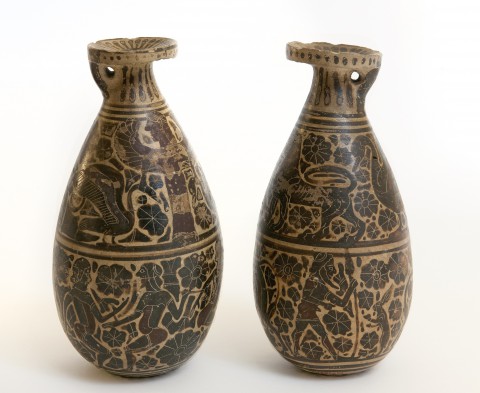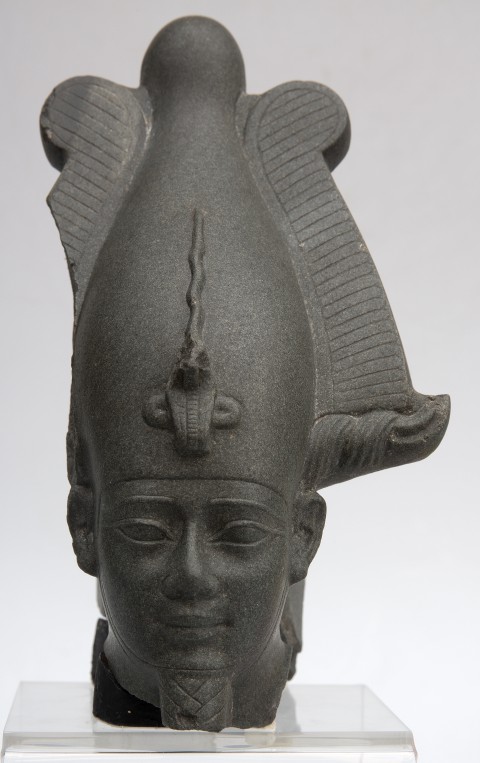Cabinets of Antiquities at the Wilanów Palace: presentation of the Egyptian collection and Greek vases from the historical Potocki family collection
The Museum of King Jan III's Palace at Wilanów has undertaken efforts to merge the historical collection of Egyptian and Greek artworks, which was scattered as a result of World War II. The opening of the Cabinets of Antiquities restores the ancient works to their deserved place in the royal residence, which was also the home of Stanisław Kostka Potocki – archaeologist, collector and connoisseur of art, as well as an enlightened politician and reformer of educational system. Making his own collection available to society at the Wilanów Museum, opened in 1805, and sharing his knowledge of ancient culture as the source of European culture, was on his part an expression of patriotism, which is worth emphasising on the eve of the centennial anniversary of Poland regaining its independence.
18th-century art connoisseurs valued ancient vases, commonly known as Etruscan, which embodied the wisdom of the ancient culture: they were an expression of the humanist values and classical harmony of the world of the time, in the Enlightenment identified with the golden age of humanity. The masterful and evocative decorations of these previous vessels spoke to the imagination, offering knowledge more easily accessible than erudite texts.
Stanisław Kostka Potocki began buying vases during his journey to Italia, which lasted from autumn of 1785 to spring of 1786. The trip was connected with, among others, the intention to complete new furnishings for the palace interiors, especially for the library room, the interior design of which was to prove the ambitions of an art lover and scholar. As the letters written from Naples to his wife Aleksandra show, Potocki let himself get carried away by the collecting passion to such an extent that most of the money he had was used to purchase ancient works of art. The excitement and emotions associated with obtaining more exhibits, personal participation in excavations and a well-thought-out composition of the collection – all this confirms Stanisław Kostka Potocki’s taste and expertise, as well as the significance of the historical objects that fired up the collector’s imagination.
Acquired with considerable effort, the ancient works of art found their place in the Potocki family collection in Wilanów, and then, from 1805 on, became part of the open museum in the palace interiors of the historical residence of Jan III Sobieski, the victorious king and patron of the arts and sciences. The collection, made available to visitors, was a source of knowledge about European art and shaped the aesthetic sensitivity of Poles, deprived of their own country. Successive generations of palace owners ensured the preservation of its unique character, and Stanisław Kostka’s grandson, August Potocki and his wife, Aleksandra, significantly supplemented the antiquities collection in the 2nd half of the 19th century and took care of their special setting in the stylishly decorated interior of the Etruscan Cabinet.

The currently presented, consolidated collection of ancient vases and Egyptian collections allows us to see them in the form that Stanisław Kostka Potocki planned: in the historical interiors of the palace, historical cabinets and against the background of the restored set decorations. Knowledge about the collection and individual objects can be found in the collection catalogue prepared by Prof. Witold Dobrowolski, as well as in The Egyptian Collection of Wilanów by Aleksandra Majewska, published by the Museum of King Jan III's Palace at Wilanów.
The opening of the Cabinets of Antiquities is linked to the 300th anniversary of the birth and 250th anniversary of the death of Johann Joachim Winckelmann, celebrated all over the world. The German scholar’s work, Geschichte der Kunst des Alterthums was translated by Stanisław Kostka Potocki, who supplemented it with examples. Thus the first Polish art history textbook was created, titled O sztuce u dawnych, czyli Winkelman polski [On the Art of the Ancients, or the Polish Winckelmann], which was published in 1815.
The Cabinets of Antiquities with the collection of Egyptian and Greek Art will be available for touring with the presentation of a ticket to the Palace (on Thursdays free of charge) starting on 2 December 2017.
We look forward to seeing you there!
suggested

Why the king-to-be read Greek and Roman literature
“Man is graced by science in all places, at war and at court, at home and in the Commonwealth. People …

Stanisław Kostka Potocki's collection of ancient sculpture and vases
Studia Wilanowskie, 1989 r. T. XI The second half of the 18th century in Poland saw the beginning of interest in …

















